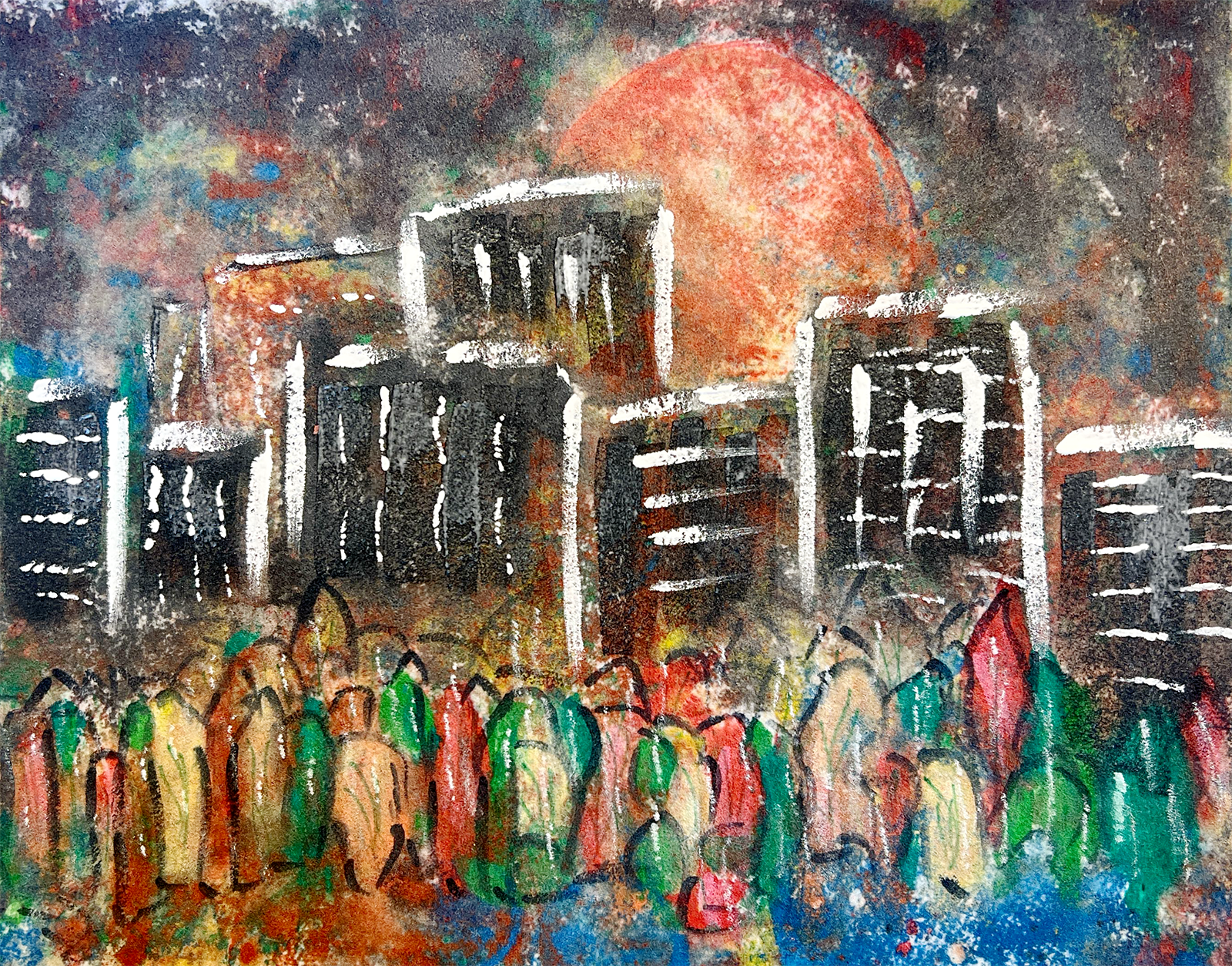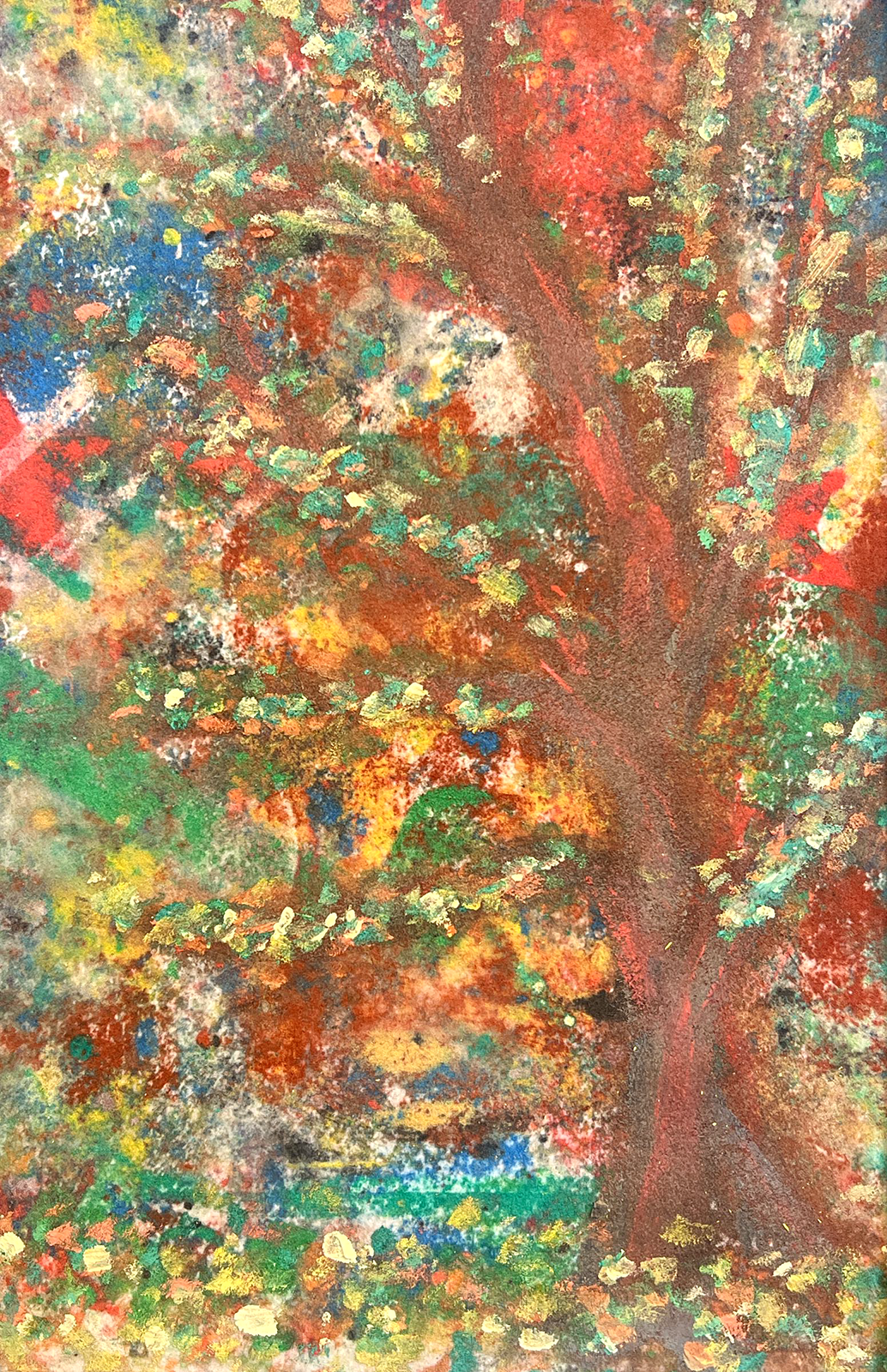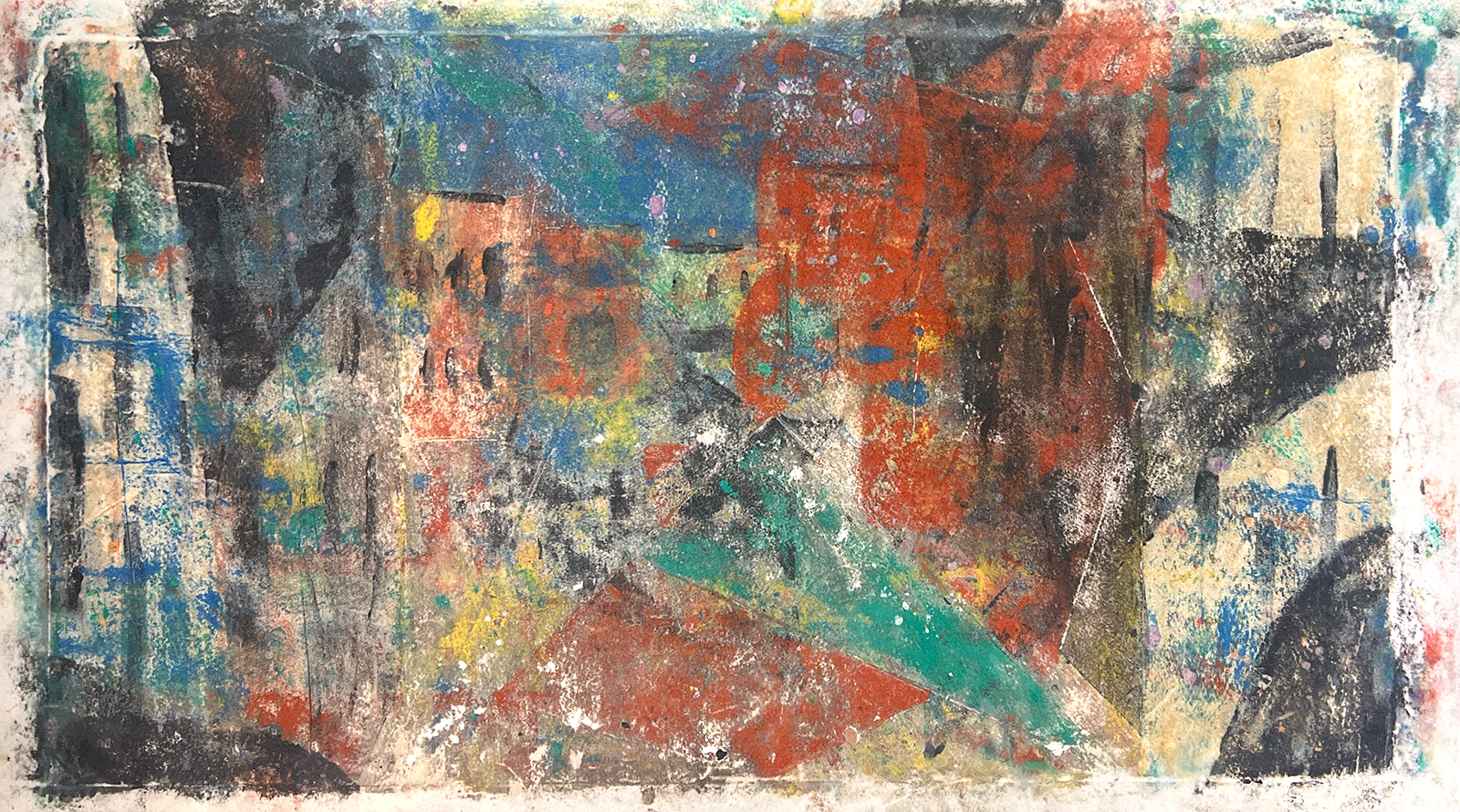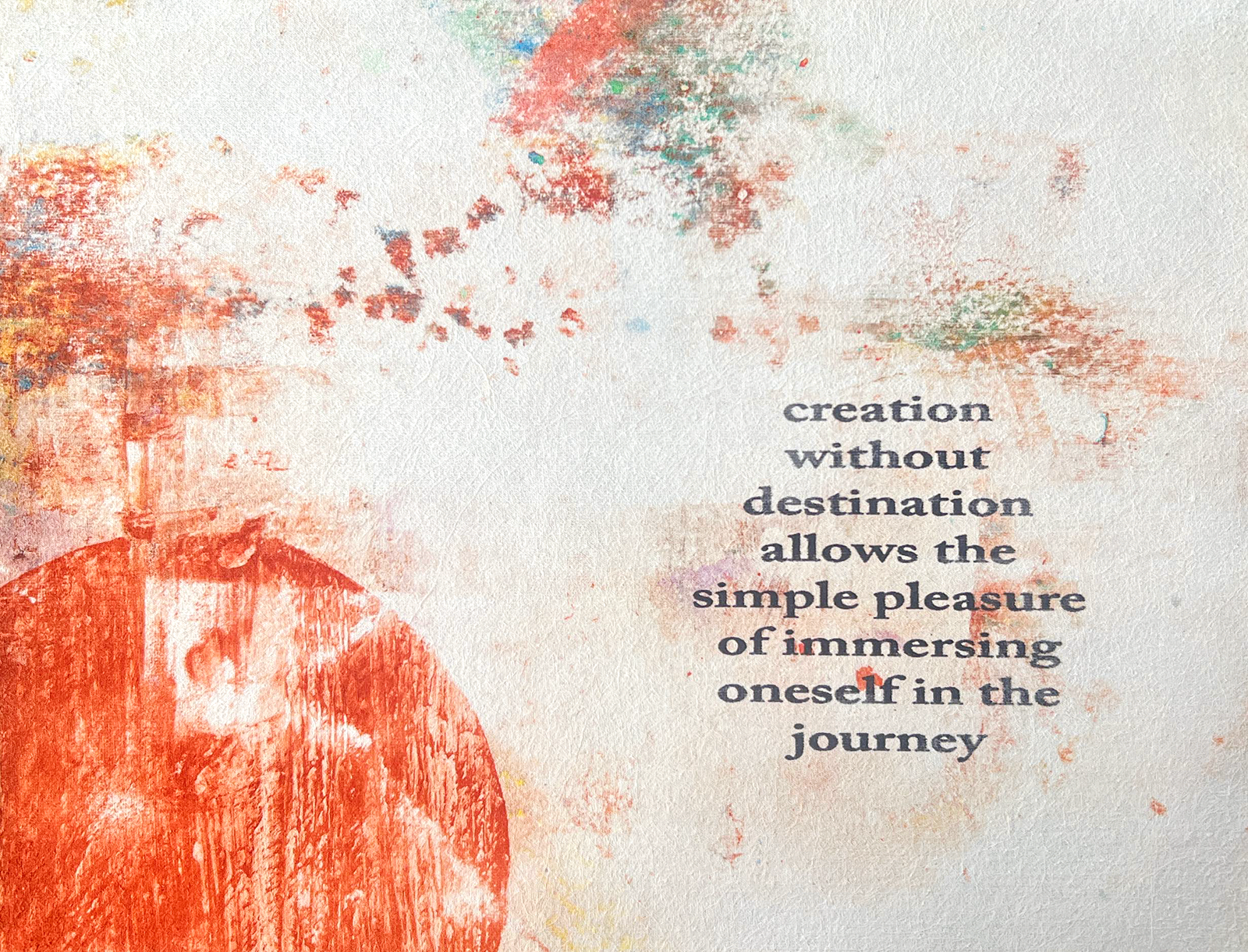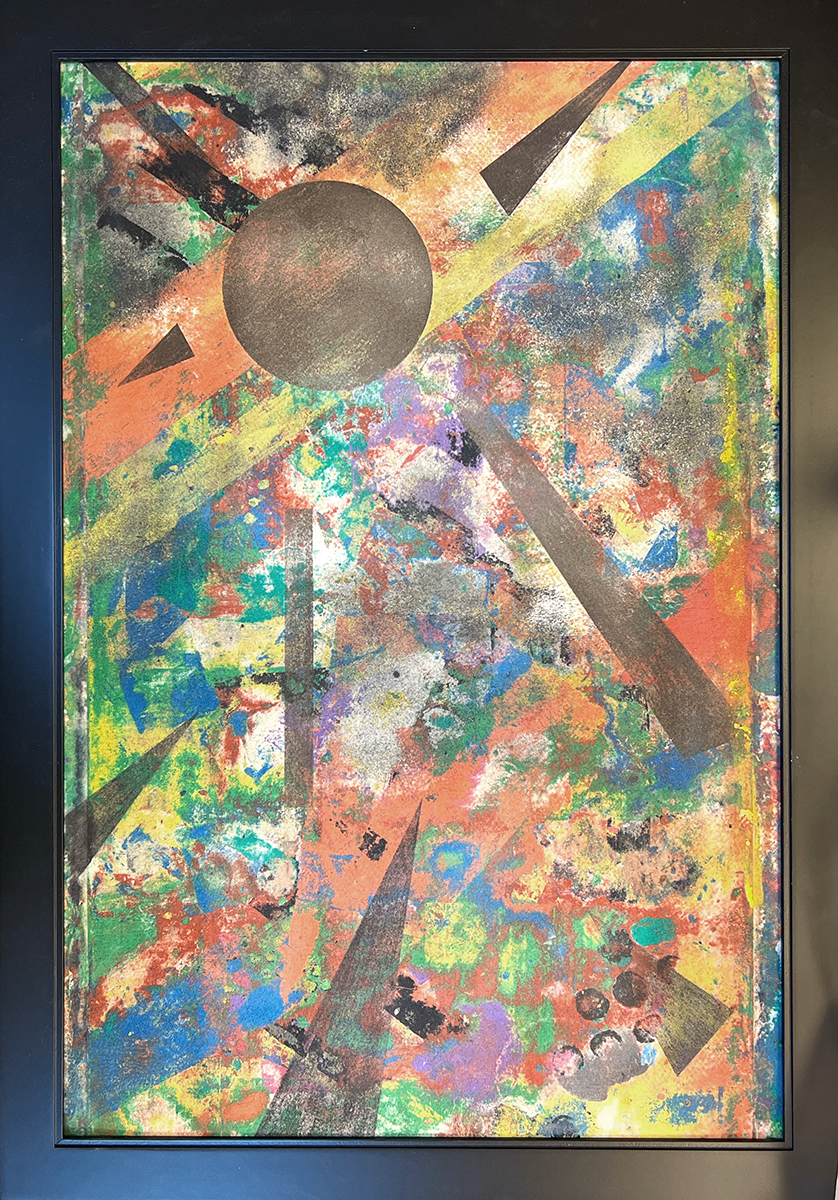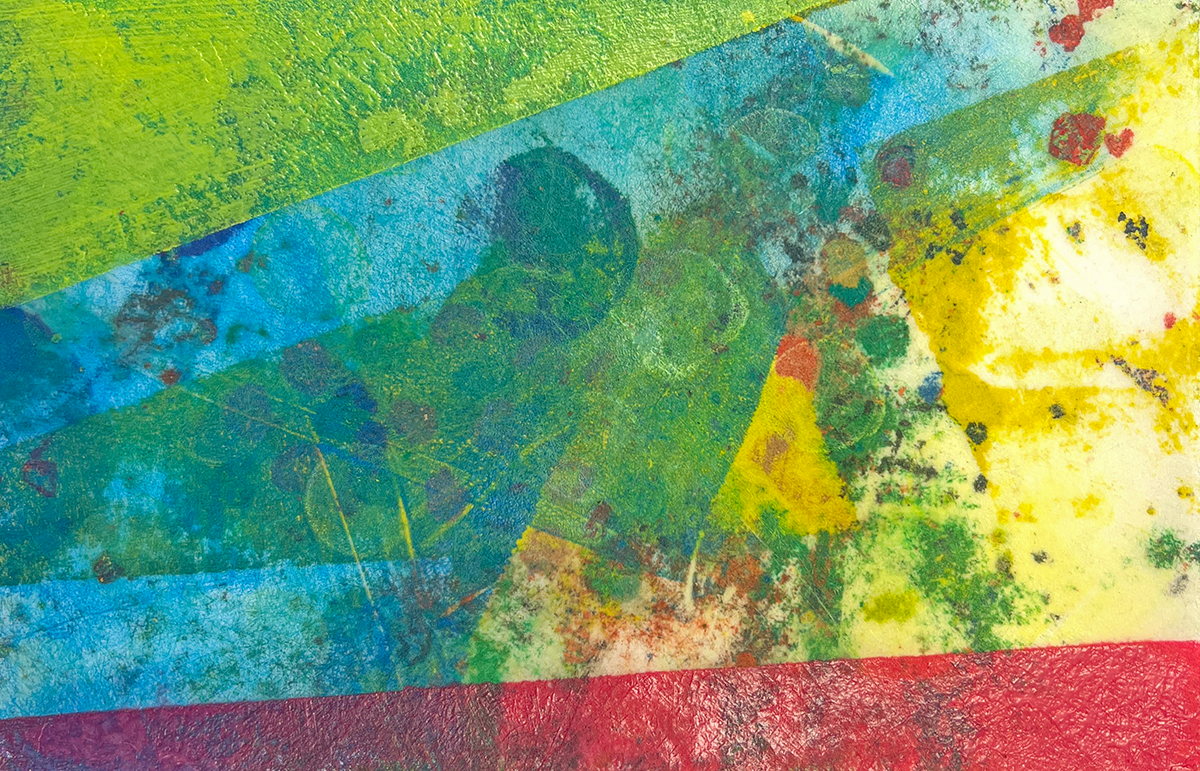Latest Posts
“Medium” Presentations Schedule
Andy Smith of Visual Realia, LLC, has curated a set of seven arts presentations focusing on art mediums across two weeks, working in space provided by the Pennsylvania College of Art & Design. All presentations are offered free of charge to the general public.
Andy Smith of Visual Realia, LLC, has curated a set of eight arts presentations focusing on art mediums across two weeks, working in space provided by the Pennsylvania College of Art & Design. All presentations are offered free of charge to the general public. Presenters include:
Reagan Bitler
Ophelia Chambliss
Cultural Alliance of York County, Rita Whitney & Kelley Gibson
Kristin Kest
Mary Moores
Andy Smith
Helen Tafesse
Terri Yacovelli
Seating is limited to twenty-four audience members; reservations are not necessary. Doors open at least thirty minutes before the scheduled session. Bookmark and revisit this page for updates.
Clay monoprints by Andrew Smith and Mitch Lyons will be displayed, and Smith's works will be available for purchase. Lyons, a Pennsylvanian, created the medium and its initial techniques.
Download & Print a Schedule
"Medium"
June 2nd - June 14th
PCA&D, 133 S Duke St, York, PA
Presented by PCA&D Work/Space & Andy Smith of Visual Realia, LLC
Schedule:
Monday, June 2nd - Set Up (Feel Free To Stop By!)
• Tuesday, June 3rd, 6:30 PM - Gourd Artwork, Reagan Bitler
Handout
• Wednesday, June 4th, 6:30 PM - Pastels, Mary Moores
Handout
• Thursday, June 5th, 6:30 PM - Cultural Alliance of York County: State of the Shifting Ground on Local, State, and Federal Cultural Support with Rita Whitney and Kelley Gibson
Handout
• Friday, June 6th, 5:00 - 9:00 PM -
This evening has been cancelled due to a facility issue. Other sessions should continue as scheduled.
Clay Monoprint Exhibit, Works by Mitch Lyons (Medium Creator) & Andy Smith, Firefly Night Market
Handout
Saturday, June 7th, Closed
• Sunday, June 8th, 6:30 PM - Conceptual Design, Helen Tafesse
Handout
• Monday, June 9th, 6:30 PM - Bas-Relief as Pictorial Space & Clay Handbuilding, Kristin Kest
Handout
Bas-Reliefs as Pictorial Space by Kristin Kest
• Tuesday, June 10th, 6:30 - Encaustic Demonstration, Terri Yacovelli
Handout
• Wednesday, June 11th, 6:30 PM - Acrylic on Pellon, Ophelia Chambliss
Handout
• Thursday, June 12th, 6:30 PM - Clay Monoprint Discussion & Demonstration, Andy Smith, with Works by Mitch Lyons, Medium Creator
Handout
• Friday, June 13th, 4:00 - 8:00 PM - Clay Monoprint Exhibit, Works by Mitch Lyons (Medium Creator) & Andy Smith
Royal Square Event:
Radiant Spectrum Crawl, 4:00 - 6:00 (Exhibit Open Until 8:00)
Find the Facebook Event Page Here
Orange Theme!
Stop by for Orange-Themed Treats
York Arts Week Kickoff
Saturday, June 14th - Tear Down (Feel Free To Stop By!)
Throughout the Medium series of presentations, attendees will get one raffle entry for each presentation they attend. At the end of the series, the raffle winner will receive a free matted and framed 8” x 10” still life monoprint of oranges, as shown below.
“Still Life: Oranges” - Clay Monoprint by Andrew T. Smith
Parking in the Royal Square Area
Metered street parking is available throughout the area. These metered spots are free after 5:00 PM. If parking before 5:00, you will need to feed the meters or use the ParkMobile app.
Parking Lots
The following lots allow free parking after 5:00 PM:
• Corner lot of E. Newton Ave and S. Duke Street
• E. King Street and S. Queen Street (Across from The Bond)
These lots are patrolled; It’s important not to park in those lots before 5:00 PM.
If the weather is nice, the following garages are reasonable walks:
Market St. Garage – 41 E. Market St., York PA 17401 (Across from the York County Administration Center)
King St. Garage – 15 W. King St., York PA 17401 (Across from the York City Police Department)
Thanks to:
PCA&D - Pennsylvania College of Art & Design
PCA&D - Center for Creative Exploration
Natalie Lascek, Executive Director, Center for Creative Exploration
Alex Schaufele, Director of Exhibitions
Jennifer Kopf, Director of Public Relations
Royal Square District
Susan Scofield/Hive
Andrew Smith (Visual Realia, LLC) is found online at:
www.facebook.com/VisualRealiaStudio
cultureontheline.com
"PCA&D acknowledges that York has a thriving creative community with several organizations that offer meaningful support. One thing that is often lacking, even in well-supported arts communities, is spaces that allow creatives to experiment or workshop ideas that are not always revenue-generating. This has led us to rethink the use of the PCA&D York space and present it as a creative pop-up program called the PCA&D Work/Space, where artists and creatives can submit an application/proposal to use the space for an experimental action, event, or creative idea in two-week increments for a small fee.
The PCA&D Work/Space program will be creatively flexible, and we anticipate possible uses being group readings or writing sessions, studio space for testing out larger works, a space to view an evolving body of work at one time, or for temporary installations, etc. Our goal is to promote curiosity, prototyping, and exploration of new concepts within the York community."
"The Lyons Share" Exhibit Article Updated
We had a wonderful opening reception for “The Lyons’ Share” exhibit at the Chester County Art Association. View photographs in the updated Culture On The Line article.
Lyons' Share Exhibit Opens September 5th at the Chester County Art Association
The Chester County Art Association shares the works of four active clay monoprint artists in their upcoming exhibit, “Lyons’ Share,” running from September 8th through the 24th. Learn more, including insights from the artists, in the Culture On The Line article linked here.
Culture On The Line article screenshot - © Culture On The Line and Andrew T. Smith
The Chester County Art Association shares the works of four active clay monoprint artists in their upcoming exhibit, “Lyons’ Share,” running from September 8th through the 24th. Learn more, including insights from the artists, in the Culture On The Line article linked here.
"The Lyons' Share"
Chester County Art Association
100 N Bradford Ave, West Chester, PA
Parking Available On-Site.
chestercountyarts.org
September Gallery Hours:
Monday-Friday: 10 AM - 5 PM
Saturday: 10 AM - 4 PM
Closed Sundays
Artists:
Steve Koelsch (skoelsch3@yahoo.com)
Robin Sesan (www.robinsesanart.com)
Andrew Smith (visualrealia.com)
Meredith Wakefield (mitchlyonsstudio.com)
Works by Mitch Lyons (mitchlyonsstudio.com)
"The Lyons' Share" opens on Thursday, September 5th, from 5:00 to 7:00 PM, at the Chester County Art Association in West Chester, Pennsylvania. The exhibit, featuring four clay monoprint artists plus representative works of Lyons, runs through September 24th. The Art Association is a nonprofit 501(c)(3) organization that has served the region since 1931.
Visual Realia Exhibit at York's Out Door Country Club
Visual Realia’s (Andrew T. Smith) exhibit at York’s Out Door Country Club
Thanks to the ongoing efforts of Creative York, I have an exhibit of approximately two dozen clay monoprints and photographs at York’s lovely Out Door Country Club. The exhibit runs through July 12th, 2024.
The hallway-based exhibit area naturally allows for sharing monoprints on one side and photographs on the other, essentially providing two mini-exhibits.
For more information on the exhibit, visit the online article on the Culture On The Line website. Works may be purchased here.
“Clay & Pigment” by Andrew T. Smith
Out Door Country Club
May 13 - July 13, 2024
1157 Detwiler Drive, York, PA
Enter Through the Center Doors
Curated by Creative York
All works copyright by Andrew T. Smith and/or Visual Realia, LLC.
Welcome, Hyperallergic Readers
Visual Realia welcomes Hyperallergic readers!
The Visual Realia website welcomes visitors from Hyperallergic and thanks Lakshmi Rivera Amin for including us in the February 15th “A View From the Easel” column.
Questions about clay monoprints? Feel free to peruse the website or email me.
Thanks for visiting!
Andy Smith
Art of the Clay Monoprint
Clay Monoprints are a relatively new art form, but they were formed from the skills of generations of potters and printmakers.
"Renaissance Town II" - Clay Monoprint, Acrylic Paint, Copper Mica, & Calcium Carbonate by Andrew T. Smith
One of my earliest recollections of doing homework was walking by my grandparent’s farm creek with my father to collect clay. We mixed it with hay from the farm and shaped it as an example of adobe (“mudbrick”) bricks. Even today, over half of the world’s citizens live in structures that utilize clay in their construction. We live with and in clay in many different forms.
When the brickmaker, potter, or clay printmaker works with clay, they touch and mold history and ages in the making. Over long stretches of time, rocks (often feldspar, the most abundant mineral group on our planet) are broken down chemically through natural solvents such as carbonic acid. Other clay minerals are formed through processes such as hydrothermal action, moving water under heat, and sometimes via volcanos.
The resting places for the clays are often near slow-moving water areas such as lakes and basins; various amounts of water combine with the clay materials, creating plasticity. When dried naturally or with the addition of heat to speed up the process, water levels decrease, and the clay hardens.
Clay has found essential uses over time, with its properties after drying coming in handy in creating ceramic vessels and both purposeful and decorative items. Human-created pottery shards have origins as far back as 14,000 BC. Ceramic objects found in the Czech Republic date to 29,000-25,000 BC.
Clay slabs were used as our first medium for writing, with a reed-based stylus inscribing the clay. Small balls of clay served as early ammunition. It continues to be used by some for the medicinal treatment of diarrhea.
Many now think of pottery and ceramic uses when hearing the word clay. We know these uses, as stated above, go back thousands of years. Decoration of these objects also started quite early, with paint being added as early as prehistoric times. Early Chinese porcelain included decorative carving, and texture and color were modified by adding sand or metal oxides. These techniques, as well as transferring a design to the pottery or using clay slips (essentially clay with a high moisture content, often with added colorants), continue in the much more recent art form called clay monoprints.
Mitch Lyons had a unique combination of backgrounds that was most likely necessary for introducing the art. His graphics degree and printmaking experience met with his art and ceramic degree.
He noticed that while working on decorating pottery works he created, he could transfer a design he made to the pottery via paper; a small amount of colored clay would stick to the paper and display the design. He rightly surmised that if he experimented with various papers, he might eventually come up with materials that would hold onto enough clay to do an artwork without further transferring it to a clay vessel.
The clay bonds to the paper via an electric charge present in the clay. As such, some materials will “hold on” to the charged clay more than others. While many traditional papers did not attract and hold the clay, Mr. Lyons found some newer man-made materials that did work, including reemay, used in filters, and Pellon, typically used as a fabric interface material.
The clay monoprint artist works on a slab of traditional high-temperature stoneware clay and adds or manipulates additional clay in various forms.
Initial Clay Slab or "Matrix"
The most common addition is through the use of (typically colored) clay slips. A slip is a mixture of clay with additional water, creating a texture between heavy cream and oatmeal in density. (Tile #6) Kaolin or China clay is used. These slips are mixed with universal colorants to create various hues and tones, as the artist wishes.
Clay Slip
Clay Slip with Added Colorant
The artist often starts by "painting" the entirety of the clay, known as the matrix, with one or more shades of colored slip.
From there, numerous techniques are used. A common approach is to paint abstractly on a sheet of blank newsprint with slip, allowing it to dry slightly. This paper can then be placed slip-side down on the matrix, with the clay slip transferred to the matrix via the use of a pastry roller.
Colored slip on Newsprint, Ready to be Transferred via a Pastry Roller
Variations can be used, such as painting specific, concrete shapes on the newsprint, and/or placing a stencil or textured item between the newsprint and matrix before rolling.
One can also paint directly on the matrix, although this can provide a bit too much water content, if the artist is not careful.
Other techniques include:
• placing shaped, pliable, colored clay on the matrix
• sprinkling chips of dried slip on the matrix
• carving into the clay to reveal lower levels of colored slip
• sprinkling common sidewalk chalk or pastels, shaved from a metal mesh strainer, over the matrix
If the artist is using characters like numbers or letters where direction is important, he or she must realize that printmaking reverses the image on the print, so some advanced planning use is necessary.
At times during the process, when water content seems high, or after a good bit of work, a blank sheet of newsprint is placed over the matrix and rolled lightly to reduce moisture and better bind the layers of clay.
When the artist is ready to print, the area for printing is masked with drywall tape, whose adhesive is only light, yet stay in place. The matrix and the receiving material (substrate) are misted lightly with a spray bottle, and the substrate is placed on the matrix.
The pastry roller is worked back and forth over the substrate, particularly working at the edges and corners for a clean transfer of clay. A finishing process occurs by rubbing the bowl of a large spoon over the print, carefully lifting an edge or corner on occasion to check for the quality of transfer.
The completed print is carefully pulled from the matrix and hung to air dry before spraying with a clear water sealant.
The matrix is ready for another print with yet more clay!
Interested in purchasing or commissioning a print? Contact Andy for more information.
Clay Monoprints
by Andrew T. Smith











































